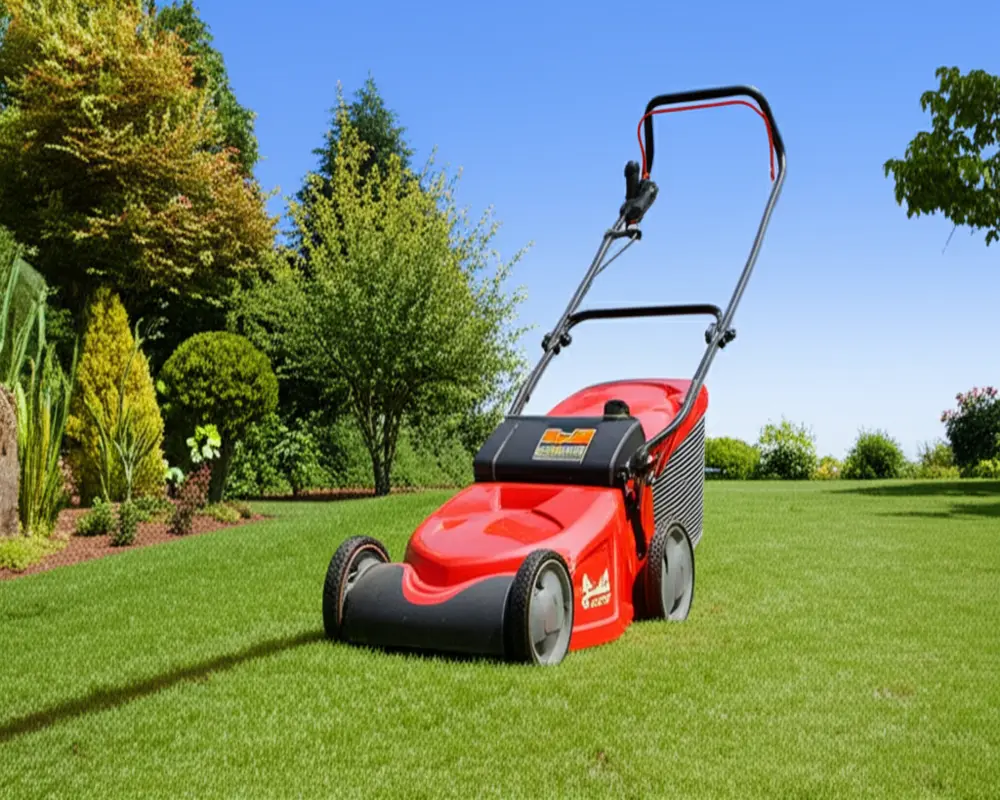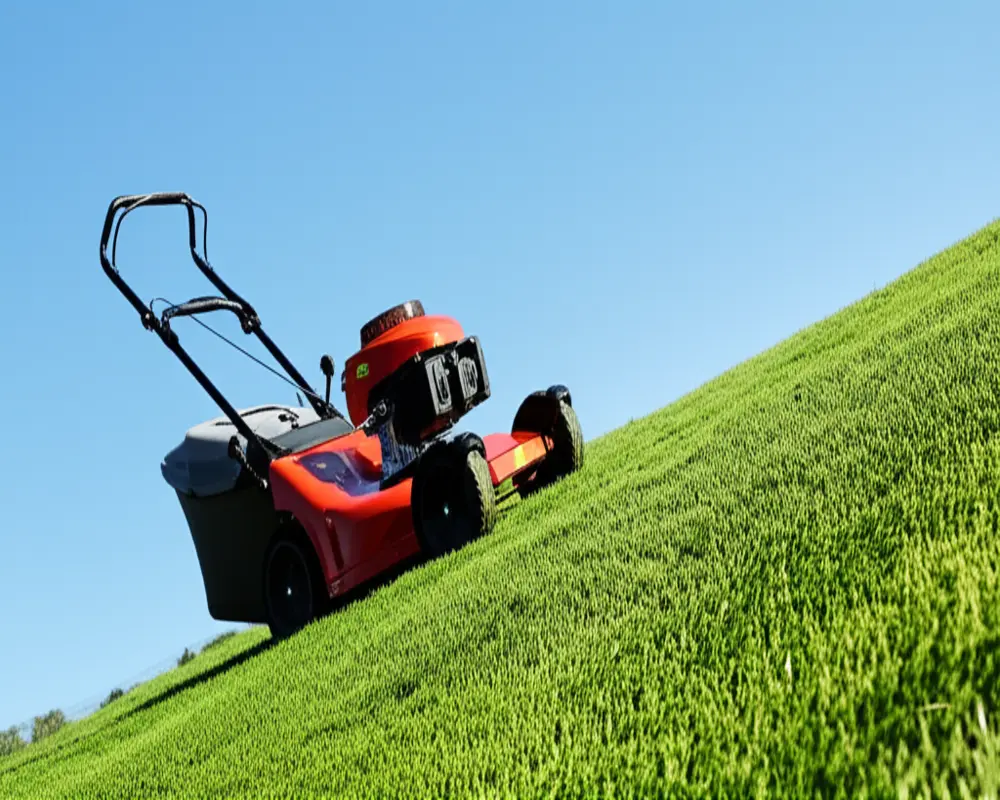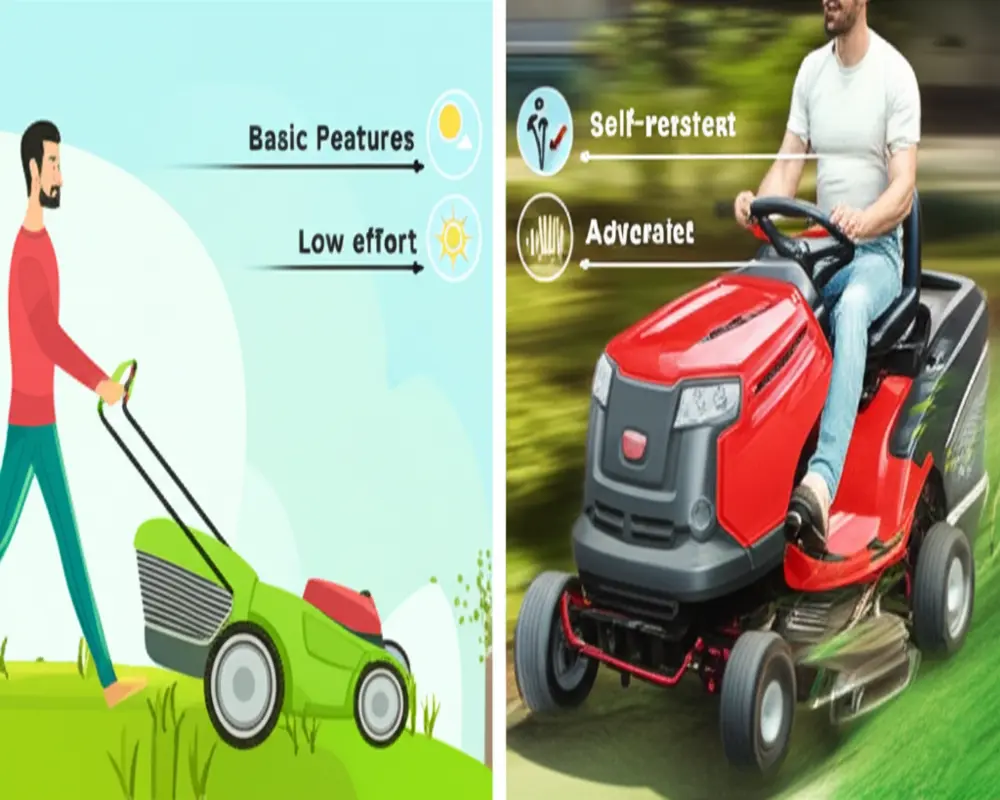Push vs Self Propelled Mower: Which Is Best for Your Lawn in 2025?
When it comes to maintaining a pristine lawn, choosing the right mower can transform your yard work from an arduous task into a straightforward, even enjoyable experience. The debate between push vs self propelled mower isn’t just about preference—it’s about matching the mower to your lawn’s size, terrain, and your own needs. In this comparison guide, we’ll clarify the differences between these two common types of lawn mowers and steer you toward the best choice for your specific lawn care situation in 2025.
Thank you for reading this post, don't forget to subscribe!Side-by-Side Comparison Table: Key Differences Between Push and Self-Propelled Mowers
The decision between a push mower and a self-propelled mower involves several factors, each impacting your mowing experience in different ways. Below is a concise comparison evaluating the key attributes of each mower type:
| Factor | Push Mower | Self-Propelled Mower |
|---|---|---|
| Initial Cost | Lower; budget-friendly | Higher; premium price |
| Effort Required | User powered; physically demanding | Engine powered; less effort |
| Suitable Lawn Size | Small to medium | Medium to large |
| Terrain Compatibility | Best on flat terrain | Suitable for uneven, hilly terrain |
| Mowing Efficiency | Slower, manual control | Faster, consistent cutting |
| Maneuverability | Lightweight, easy in tight spaces | Heavier, less nimble |
| Maintenance | Simple upkeep | Requires more maintenance |
| Power Source Options | Manual, gas, electric | Gas, battery electric, corded electric |
| Noise and Environmental Impact | Quiet, eco-friendly (manual & electric) | Louder (gas models), some emission concerns |
| Durability | Fewer complex parts, sturdy | More complex, potentially durable |
| Common Features | Basic cutting functions | Variable speed, electric start, mulching |

Understanding Push Mowers: Simplicity and Control
A push mower operates by the user physically pushing the mower forward, relying either on manual power or assisted by an engine or motor. The manual versions are entirely powered by your push, while gas or electric push mowers offer additional blade power but still require physical effort to move the mower.

The benefits of push mowers encompass:
- Cost-effectiveness: They generally have a smaller price tag, making them suitable for budget-conscious buyers.
- Easy maintenance: Their mechanical simplicity makes upkeep straightforward.
- Great for small and intricate yards: Their lighter weight and maneuverability excel in tight spaces and around obstacles.
- Eco-friendly and healthy: Manual push mowers emit no pollution and encourage physical activity.
- Compact storage: They take up less space thanks to their lighter frames.
However, push mowers also come with certain disadvantages:
- Physically demanding: Users must apply force to move the mower, which can be challenging on large or rough terrains.
- Time-consuming: Manual effort means mowing takes longer, especially for bigger lawns.
- Limited performance on hills and thick grass: The manual effort may not suffice in more challenging conditions.
- Fewer features: Typically, push mowers lack advanced mowing options such as variable speeds or self-adjusting blades.
If you have a small, flat lawn or are looking for a budget-friendly and sustainable option, a push mower is a viable choice. This mower type suits homeowners who don’t mind a bit of exercise during lawn care and who value low maintenance.
For those interested in yard tools maintenance, exploring tips on garden spade rust prevention can be a useful complement to your gardening upkeep routine.
Understanding Self Propelled Mowers: Power and Convenience
Self-propelled mowers feature engines or motors that power their wheels, reducing the need for user effort to push the machine forward. These mowers often allow the user to control the speed and direction, making mowing less physically taxing.

These mowers come with varied drive systems:
- Front-Wheel Drive (FWD): Good maneuverability on moderately uneven terrain.
- Rear-Wheel Drive (RWD): Provides better traction on hilly or rough terrain.
- All-Wheel Drive (AWD): Offers maximum traction for challenging slopes and irregular lawns.
Power options include gas engines, battery-powered electric motors, and corded electric models, each with distinct benefits regarding power, noise, and environmental footprint.
The advantages of self-propelled mowers include:
- Reduced physical effort: Ideal for users with limitations or preference for ease.
- Faster mowing: Greater efficiency in larger or tougher lawns.
- Better terrain handling: Can easily navigate slopes and thick grass.
- Consistent cut quality: Maintains speed for even cutting.
- Advanced features: Often equipped with variable speed controls, electric start, bagging, and mulching options.
On the flip side, self-propelled mowers often require:
- Higher upfront and running costs: Price and ongoing maintenance can be more expensive.
- Complex maintenance: Engine systems demand more attention.
- Heavier build: Less agile in tight yards or around obstacles.
- Noise and emissions: Gas models may be loud and environmentally taxing.
For medium to large lawns, especially those with hills or rough terrain, or for users looking for convenience and lower physical strain, the self-propelled mower is a strong candidate. It’s also suitable for homeowners with time constraints who value mowing efficiency.
Key Factors for Decision Making
Choosing between a push and self-propelled mower involves several critical considerations. The size and topography of your lawn are primary: smaller, flat yards align better with push mowers, while larger or sloped terrains merit self-propelled options. Your personal stamina and physical health also influence the choice—if mowing exertion is a concern, a self-propelled mower may be preferable.
Budget considerations extend beyond purchase price; anticipate maintenance, fuel or battery replacement costs. Time availability affects decision-making—those who mow frequently or under time pressure might appreciate the speed of a self-propelled mower. Storage space can also restrict you to a more compact push mower if space is limited.
Environmental and noise concerns matter too. If you prioritize a quieter machine with lower emissions, manual or electric push mowers hold an advantage. Additionally, desired features like bagging, mulching, or variable speed could sway your decision toward the self-propelled models.
Beyond Basics: Expert Insights and Nuances
The engine and power source options have distinct pros and cons that impact daily use. Gas engines generally provide powerful cutting but require regular tune-ups and produce emissions addressed in guidelines from the U.S. Environmental Protection Agency on Lawn Equipment Pollution. Battery-powered mowers, increasingly popular in 2025, balance power with environmental friendliness and reduced noise. Corded electric mowers offer consistent power but are limited by cord length.
Maintenance differs as well: push mowers have fewer moving parts, making maintenance simpler, while self-propelled mowers require periodic engine service, blade checks, and parts lubrications. Safety is critical with both types—following manufacturer instructions and using protective gear reduces accidents. Additionally, your mower choice influences blade type and cutting performance; self-propelled models with variable speeds can optimize cut quality on different grass types and terrain conditions.
Which Mower Wins for You? Conclusion and Recommendations
In summary, both push and self-propelled mowers offer strengths suited to various lawn care needs.
- Choose a push mower if: Your yard is small and flat, you favor cost savings, or you enjoy the exercise and simplicity of manual mowing.
- Opt for a self-propelled mower if: You maintain a larger or hilly lawn, seek convenience, or wish to reduce physical effort during mowing.
Expert advice encourages aligning your mower choice with lawn size, terrain, and personal physical factors. Explore specific models within your preferred category and consider real-world reviews such as those from Consumer Reports to ensure your investment supports your lifestyle and lawn care expectations.
Frequently Asked Questions (FAQs)
- Are self-propelled mowers worth the extra cost?
- For those with larger or uneven lawns, the convenience, reduced physical effort, and efficiency often justify the higher price and maintenance.
- Can push mowers be converted to self-propelled?
- Generally, push mowers are not designed for conversion due to structural differences; purchasing a self-propelled model is advised.
- What is the lifespan comparison between mower types?
- With proper maintenance, push mowers can last 10+ years; self-propelled mowers, due to complexity, might require more frequent repairs but also can last long if well cared for.
- What are the best self-propelled mower options for hills?
- Models with rear or all-wheel drive provide better traction and control on steep or uneven terrain.
- How do fuel consumption differences compare between mower types?
- Self-propelled gas mowers consume more fuel due to engine power for wheels and blades, while push mowers consume fuel only for blade power if gas-powered, or none if manual or electric.
For further practical gardening advice and tool upkeep, consider reading about hand cultivator expert tips to enhance your gardening experience.

